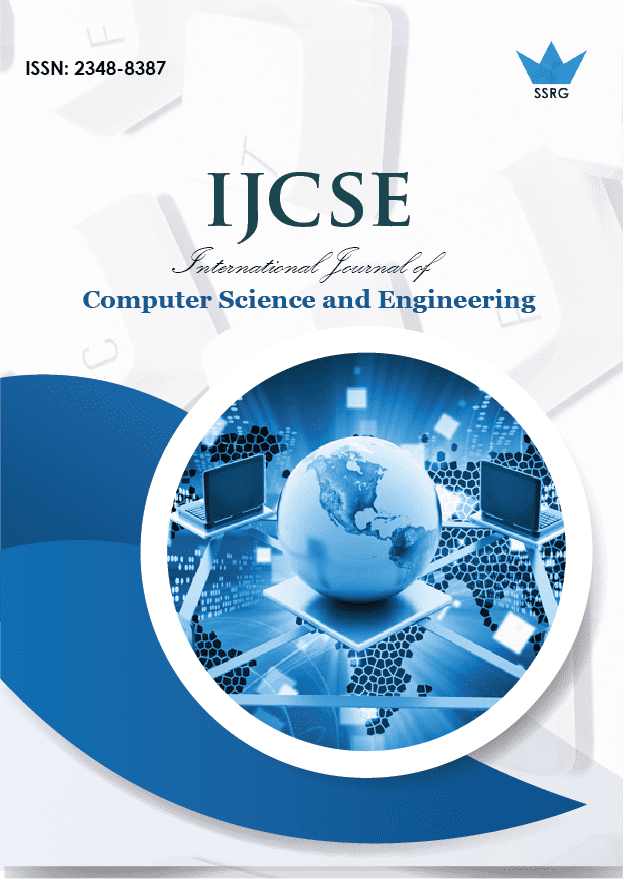Patient Case Similarity

| International Journal of Computer Science and Engineering |
| © 2024 by SSRG - IJCSE Journal |
| Volume 11 Issue 12 |
| Year of Publication : 2024 |
| Authors : Perumalla Sai Surya, Bhumpalli Vishnu Vardhan Reddy, Sanjana R, Lingamdhinne Akanksha, Koyi Mithun |
How to Cite?
Perumalla Sai Surya, Bhumpalli Vishnu Vardhan Reddy, Sanjana R, Lingamdhinne Akanksha, Koyi Mithun, "Patient Case Similarity," SSRG International Journal of Computer Science and Engineering , vol. 11, no. 12, pp. 16-22, 2024. Crossref, https://doi.org/10.14445/23488387/IJCSE-V11I12P103
Abstract:
This is the approach to finding similar patients in terms of characteristics. It may shift how health care is going to develop itself, especially with the help of machine learning algorithms in finding patterns that may not be observable from the data given and in enhancing clinical decision-making. This project aims to develop a strong patient similarity analysis system based on decision trees. The steps in the project include data collection and preprocessing, feature engineering, model training, evaluation, and finally, deployment. The quality and completeness of the data are necessary for any analysis. Feature engineering is actually the process of choosing and designing relevant features to describe patients. Decision trees learn decision rules that classify patients into similar groups. Some of the metrics used for determining the performance of the model are accuracy, precision, recall, and F1-score. Data privacy, bias, and fairness must, therefore, be considered when applying the model practically. The model, therefore, must be explainable to the clinicians to gain their confidence and enhance uptake. Finally, further learning is needed to update the model to achieve accuracy and relevance. This will help us harness the similarity analysis of patients to enhance clinical decision-making, treatment planning, and accelerating medical research. It is a contribution toward the advancement of precision medicine, which improves patient outcomes in a broader sense.
Keywords:
Decision tree, Similarities, Preprocessing, Visualization, Prediction, Accuracy.
References:
[1] Vili Podgorelec et al., “Decision Trees: An Overview and their Use in Medicine,” Journal of Medical Systems, vol. 26, no. 5, pp. 445-463, 2002.
[CrossRef] [Google Scholar] [Publisher Link]
[2] Han et al., “A Survey of Data Mining Techniques for Medical Diagnosis,” 2001.
[3] L.W.C. Chan et al., “Machine Learning of Patient Similarity: A Case Study on Predicting Survival in Cancer Patient After Locoregional Chemotherapy,” 2010 IEEE International Conference on Bioinformatics and Biomedicine Workshops (BIBMW), Hong Kong, China, pp. 467-470, 2010.
[CrossRef] [Google Scholar] [Publisher Link]
[4] Ahmad Taher Azar, and Shereen M. El-Metwallym, “Decision Tree Classifiers for Automated Medical Diagnosis,” Neural Computing and Applications, vol. 23, pp. 2387-2403, 2013.
[CrossRef] [Google Scholar] [Publisher Link]
[5] Marinka Zitnik et al., “Machine Learning for Integrating Data in Biology and Medicine: Principles, Practice, and Opportunities,” Information Fusion, vol. 50, pp. 71-91, 2019.
[CrossRef] [Google Scholar] [Publisher Link]
[6] Vishakha Sharma et al., “Patient-Case Similarity,” International Journal of Computer Science and Information Technology Research, vol. 8, no. 2, pp. 5-9, 2020.
[Publisher Link]
[7] Dillon Chrimes, “Using Decision Trees as an Expert System for Clinical Decision Support for COVID-19,” Interactive Journal of Medical Research, vol. 12, no. 1, pp. 1-12, 2023.
[CrossRef] [Google Scholar] [Publisher Link]
[8] Ramalingam Shanmugam, Chapter 7 - How Healthcare Decision Trees Emerge and Function, Data-Guided Healthcare Decision Making, Cambridge University Press, pp. 188-198, 2023.
[CrossRef] [Google Scholar] [Publisher Link]
[9] Sherry-Ann Brown et al., “Patient Similarity and other Artificial Intelligence Machine Learning Algorithms in Clinical Decision Aid for Shared Decision-Making in the Prevention of Cardiovascular Toxicity (PACT): A Feasibility Trial Design,” Cardio-Oncology, vol. 9, no. 7, pp. 1-10, 2023.
[CrossRef] [Google Scholar] [Publisher Link]

 10.14445/23488387/IJCSE-V11I12P103
10.14445/23488387/IJCSE-V11I12P103